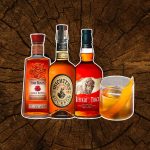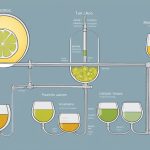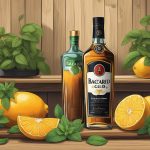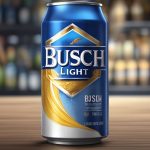As a beer enthusiast, I have had the pleasure of trying many different types of beers from around the world. One country that stands out for its exceptional beer is Germany. Known for its rich brewing tradition and meticulous craftsmanship, Germany offers a wide range of beers that cater to various tastes and preferences. In this article, I will share with you my personal picks for the 11 best German beers.
1. Weihenstephan Hefeweissbier
When it comes to German wheat beers, Weihenstephan is a true legend. This Hefeweissbier is brewed by the world’s oldest brewery and perfectly exemplifies the style. Its hazy golden appearance, combined with hints of banana and clove, creates a harmonious and refreshing flavor profile.
2. Paulaner Oktoberfest Märzen
As the name suggests, this beer is a quintessential choice for celebrating Oktoberfest. With its amber color and rich maltiness, Paulaner Oktoberfest Märzen brings out the festive spirit in every sip. It pairs perfectly with traditional German cuisine and is a must-try during the fall season.
3. Schneider Weisse Aventinus
If you’re a fan of strong and complex beers, Schneider Weisse Aventinus is a must-try. This dark wheat beer boasts a robust flavor profile with notes of banana, dark fruit, and a hint of spice. Its full-bodied nature and slightly higher alcohol content make it a great beer for savoring on a chilly evening.
4. Augustiner Helles
When it comes to German lagers, Augustiner Helles is a true classic. This Munich-style pale lager is known for its crisp and clean taste, with subtle malt sweetness and a refreshing finish. Whether you’re enjoying it at a beer garden or in the comfort of your own home, it’s hard to go wrong with this one.
5. Ayinger Celebrator Doppelbock
Doppelbocks are known for their rich and malty character, and Ayinger Celebrator is a shining example of this style. Its deep mahogany color and complex flavors of chocolate, caramel, and dark fruit make it a beer to be savored slowly. It’s the perfect companion for a cozy night by the fireplace.
6. Erdinger Weissbier
Erdinger Weissbier is another fantastic wheat beer that shouldn’t be missed. This Bavarian classic offers a refreshing and effervescent experience with flavors of banana, clove, and a touch of citrus. Its smooth and creamy texture adds to the overall enjoyment, making it a go-to choice for many beer enthusiasts.
7. Rothaus Pils
If you prefer a crisp and hoppy beer, Rothaus Pils is an excellent option. This traditional German pilsner impresses with its bright golden color, floral aroma, and well-balanced bitterness. It’s a great choice for those hot summer days when you’re looking for something refreshing.
8. Schlenkerla Rauchbier Märzen
If you’re feeling adventurous and want to try something truly unique, Schlenkerla Rauchbier Märzen is a must-try. This beer is renowned for its smoky flavor, reminiscent of a bonfire or smoked meat. While it may not be for everyone, it’s definitely an experience worth having for those seeking something out of the ordinary.
9. Bitburger Pils
Bitburger Pils is a widely popular German beer that has gained recognition both domestically and internationally. Known for its crisp and clean taste, this pilsner offers a perfect balance of malt sweetness and hop bitterness. It’s a great option for those who enjoy a classic, easy-drinking beer.
10. Franziskaner Weissbier
When it comes to German wheat beers, Franziskaner Weissbier is a top contender. With its golden color, creamy head, and notes of banana and clove, it delivers a delightful sensory experience. Whether you’re enjoying it with a hearty meal or on its own, it’s sure to satisfy your taste buds.
11. Krombacher Pils
Lastly, Krombacher Pils is a popular German beer that has gained a loyal following. This crisp and refreshing pilsner boasts a light golden color and a clean, hoppy taste. It’s a versatile beer that pairs well with a wide range of cuisines, making it a great choice for any occasion.
Germany has a beer for every palate, and these 11 selections are just the tip of the iceberg. Whether you’re a fan of wheat beers, lagers, or something more adventurous, German breweries have you covered. So, grab a glass, raise a toast, and embark on a flavorful journey through the world of German beer.







